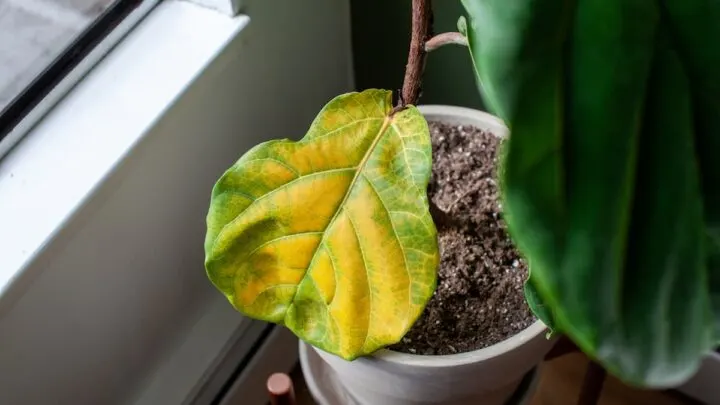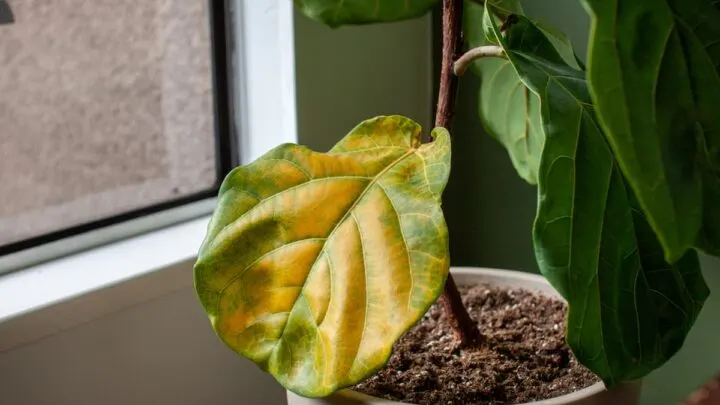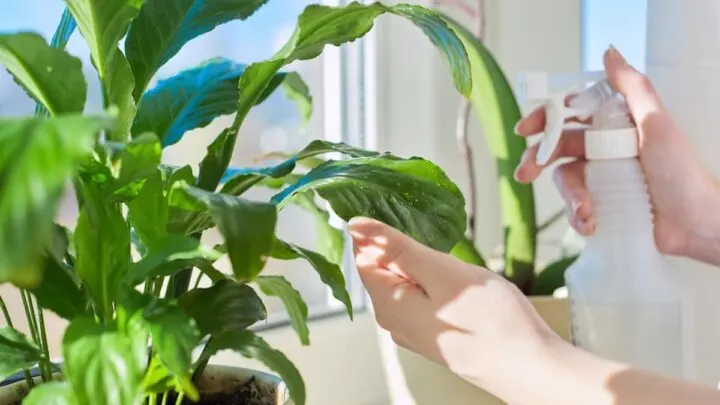Many items we encounter can be used for more than what they are advertised. Whole foods often have nutritious layers that are not utilized and tossed away when they can be used to bring new life to your indoor and outdoor plants. Alternative methods to naturally fertilize your plants can help them reach their fullest potential without gravitating toward commercial fertilizers.
So, how can you use natural fertilizers for houseplants?
Natural fertilizers can be used for your houseplants and can be found in abundance throughout your day-to-day activities. Use can be as simple as adding a banana peel to your plant’s soil or using a homemade to occasionally water your plant.
Continue reading to learn more about natural fertilizers and what can be used to help your houseplants grow.

What is a good natural fertilizer for houseplants?
Natural fertilizers can be picked more suited to your plant’s needs than a general fertilizer if you can identify a specific nutrient deficiency. Once you know what you’re looking to improve upon, you can better curate the solution to the problem.
| Food/ Household Item | N | P | K | Mg | Fe | Ca |
| Banana peels | X | X | X | X | ||
| Eggshells | X | X | ||||
| Coffee Grounds | X | |||||
| Molasses | X | X | X | X | ||
| Green tea | X | |||||
| Aquarium water | X | X |
For example, plants that are lacking in foliage growth need more nitrogen. This can be achieved by occasionally using coffee grounds or green tea to supplement the soil’s nitrogen.
Being familiar with the signs of common nutrient deficiencies will help you pinpoint what needs to be addressed so you can tend to your plant’s needs.
Nitrogen (N): Yellowing of older leaves and stunted growth. Use banana peels, coffee grounds, aquarium water, or green tea sparingly to supplement nitrogen deficiencies.
Banana peels can be chopped into small pieces and placed two to three inches under the soil in small amounts, as they take some time to decompose fully.
A cup of green tea can supplement watering your plant once every few weeks, and coffee grounds can be used as a soil amendment. Aquarium water can be used once every 4-6 weeks in place of a regular watering session.
Phosphorus (P): Older leaves appear discolored with a reddish or purple tinge to the underside of the leaf. Tips could also appear burned. This is a relatively uncommon deficiency, so using something that supplies both phosphorus and another nutrient should suffice for phosphorus.
Potassium (K): Browning at the leaf edges, lack of flowering/fruiting, stunted or slowed growth. Another uncommon deficiency.

Magnesium (Mg): Leaves become brittle with yellowing between the leaf veins. Affected leaves eventually die off. Supplement using Epsom salts, banana peels, or diluted molasses. Diluting molasses generally use 1-2 tablespoons per gallon of water.
Iron (Fe): Yellowing between the veins uniformly throughout the leaf. Eventual leaf death; this deficiency is also typically tied with soil acidity; the more neutral or basic a soil is, the less some plants can utilize the iron present in the soil.
Calcium (Ca): New growth is distorted and eventually dies off; blossom-end rot is commonly seen in nightshades and brassicas. Eggshell tea or powder mixed into the soil helps combat this issue.
It can be difficult initially to determine what signs your plant is displaying, so it is important to remember other factors can come into play regarding your plant’s appearance. Certain nutrients become unavailable to your plant if you have basic or too acidic soils. Soil pH meters can be purchased to test your plant’s soil conditions. Knowing the range of each specific plant you prefer to grow is also good. Most are around 6.0-7.0, though some thrive at a more acidic pH.
An overabundance of water or very well-draining, sandy soils can also wash out the nutrients present, requiring fertilizer more frequently. It is best to amend these soils using peat moss and/or compost to retain more water and nutrients but still be well-draining.

Do eggshells help houseplants?
Eggshells can add calcium carbonate, which acidifies the soil. Most houseplants prefer soils on the acidic side, and many ornamental flowering plants such as hydrangeas and camellias do as well.
Calcium is an integral part of a plant’s structural development. It serves as the first line of defense against diseases, so a deficiency in this element can lead to a weakened plant that is more susceptible to pests and potential pathogens.
There are a couple of ways eggshells can be used to fertilize your houseplants:
First, clean the eggshells thoroughly before use. Be sure to use hot water and get any membranes or leftover egg whites out of the shells before setting them dry for a few days.
From here, you can pulverize the shells to a powder; the more broken down it is, the faster your plant will be able to absorb it, though some slight variance in texture is fine. This can be mixed into the soil for plants that need some more acidity or additional calcium.
Alternatively, you can make an eggshell tea that can be poured over your plant’s soil. Clean the eggshells outlined above, crush them into fragments, not powder, and steep them in boiling water. Allow your eggshells to steep overnight to extract as much calcium as possible. Strain the eggshells and use the water on your plants.
Common garden plants that would most benefit from eggshells would be brassicas (cauliflower, broccoli, chard, etc.), where the boost in calcium has been shown to protect against blossom-end rot combined with proper watering techniques. Houseplants that also appreciate some extra calcium include hoyas, ivy plants, and some succulents.
Keep in mind that eggshells do take some time to decompose and get absorbed by your plant fully, so the results of using eggshells won’t be as quick as using a more traditional NPK fertilizer. Think of this as ultra-slow release fertilizer; you likely will only need to use eggshells a couple of times a year to supplement your plant’s calcium needs. As with anything, overdoing this can lead to issues.

How do you make homemade indoor plant food?
If you are looking for a more spectrum solution that can be used closer to the frequency of commercial fertilizers, you might have to pick up some extra ingredients. However, it will be worth it if you aim to transition to more natural, homemade remedies and ingredients.
A recipe of Epsom salt, baking soda, and household ammonia can yield a relatively well-balanced liquid fertilizer that can be used for houseplants and plants in the garden. A plus side of this method is that you don’t have to dilute your fertilizer; it is ready to go shortly after mixing.
Use a bucket or large jug to mix all of your ingredients. If you are using the solution for only a few plants, use a container with a lid to store the remainder for later use. Label your container and keep it away from animals and children, as these ingredients should not be consumed.
Add 1.5 tablespoons of Epsom salt and 1.5 teaspoons of baking soda to your container, followed by about 1/4 teaspoon of household ammonia, which can be found with cleaning supplies in most stores. Fill your container with water and mix.
After about half an hour, or once the Epsom salts have completely dissolved, you can apply the homemade plant food to your houseplants. Use the amount that you would typically use to water but with the fertilizer solution once every 4-6 weeks, or add in smaller amounts every week or two after regular watering.
This solution will provide most essential nutrients and micronutrients such as nitrogen, sodium, and magnesium. These elements will bolster your plant’s growth and help it looks its best.
Final Thoughts
Using items commonly available at home to supplement your plant’s nutrition is a rewarding way to be more sustainable and self-sufficient. It also helps tune you into your plant’s needs and identify areas where there might be some deficiency so you can fix the problem at the source.
Try utilizing one of these methods to recharge your soil full of nutrients to lead to a happier and healthier houseplant.

Hi there, my name is Allie and welcome to my blog; GareningWithAllie!
Much of what you see written here is just our personal experiences with gardening. Along with the content I write here, there is also a unique collection of gardening topics covered by some of our close friends. I hope you find everything you read here to be helpful, informative, and something that can make your gardening journey the most lovely experience ever! With that said, Happy Gardening!
